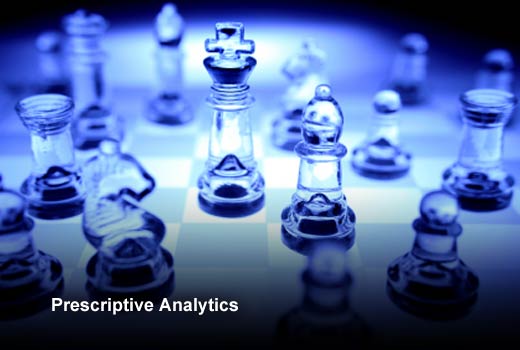Big Data has become a big deal for companies of all sizes. The rush to capitalize on business intelligence to gain a competitive edge has brought forth a bevy of new analytics products, solutions and services designed to help companies make sense of, and gain insight from, an ever-widening array of data. From consumer behavior to weather trends to disease propagation, data has become a competitive differentiator in helping both B2B and B2C companies forecast and make strategic decisions to increase revenue, reduce risk and spur growth.
In 2016, self-service analytics will take center stage, putting the power of advanced, statistically sound business analytics in the hands of business users for fast, simple and sophisticated decision-making. But, along with this move to bring analytics to every desktop, a number of other key trends will drive data analytics forward in the coming year. In this slideshow, BeyondCore has identified the top data analytic trends to watch in 2016.
Data Analytic Trends 2016
Click through for the top data analytic trends to watch in 2016, as identified by BeyondCore.
Automated Machine Learning
A shift away from presumptive analytics
Conventional analytics require analysts to first form a hypothesis — a question — and then query the data to surface the answer to that question. In order to arrive at accurate results, this model presumes that 1) the analyst knows the right questions to ask and 2) the hypothesis and the resulting insights are free of bias. But, of course, both of these parameters are impossible to achieve: Humans can’t possibly know all the right questions and, by our very nature, those questions are loaded with bias, influenced by our presumptions, selections and what we intuitively expect to see.
In 2016, we’ll see a strong shift from presumptive analytics — where we rely on human analysts to ask the right, bias-free questions — toward automated machine learning and smart pattern discovery techniques that objectively ask every question, eliminating bias and overcoming limitations.
Validation and Explanation
Growing demand for validation and explanation
Distinguishing real insights from false patterns requires a highly specialized set of skills, yet the U.S. alone faces a shortage of nearly 200,000 people with this expertise. While algorithms can certainly crunch the numbers, decision makers are hesitant to take action based on insight they don’t fully understand, and making decisions based on invalid or inaccurate analysis can lead to disastrous consequences. The shortage of data scientists coupled with the need for understanding will trigger increased demand for solutions that provide automated statistical validation and that dispense with the “black box” model to provide detailed explanation, bring clarity to analyses, and confirm the soundness of data patterns.
Prescriptive Analytics
Prescriptive becomes the new predictive.
The true value of analytics can only be realized when the analysis points to what steps you should take to drive optimization and maximize ROI in the future. But, conventional predictive analytics tools are limited in that they only look back at historical data and forecast what they think will happen, leaving the question of “What do I do about it?” up to you. In the coming year, prescriptive analytics — recommended actions based on smart pattern discovery — will take the lead as companies look for more sophisticated analyses that help them drive change, optimization and ROI, instead of just an historical snapshot or a probable forecast.
Privacy Legislation
Tighter privacy legislation will force changes in security solutions.
While data privacy and security have always been a top priority, changes in international law have altered the privacy landscape even more with serious business implications. The recent ruling by the European Court of Justice in the case of Schrems v. Data Protection Commissioner changes the way U.S. companies must handle and analyze private data from international consumers. As a result, analytics solutions that conduct analyses in the cloud — without storing or creating copies of the data — will likely emerge as winners and gain market traction, as companies look to solution providers to reduce their security risk.
Visualization
Visualization gets a facelift.
Graphs and charts are very compelling, but also static, sometimes giving business users a false sense of security about the significance — or lack of it — in the data they see represented. Much like presumptive analytics, conventional visualizations display what users assume they need to know. But, what if the questions you really need answered are not asked by those static charts and graphs? What if there’s more to the story? This year, data visualization tools will need to become more than pretty graphs — they’ll need to give us the right answers, dynamically, as trends change. We expect to see truly dynamic dashboards become the new visualization standard, automatically populating with entirely new charts and graphs depicting up-to-the-minute changes as they emerge, revealing hidden insights that would otherwise be ignored by the typical dashboard array.








